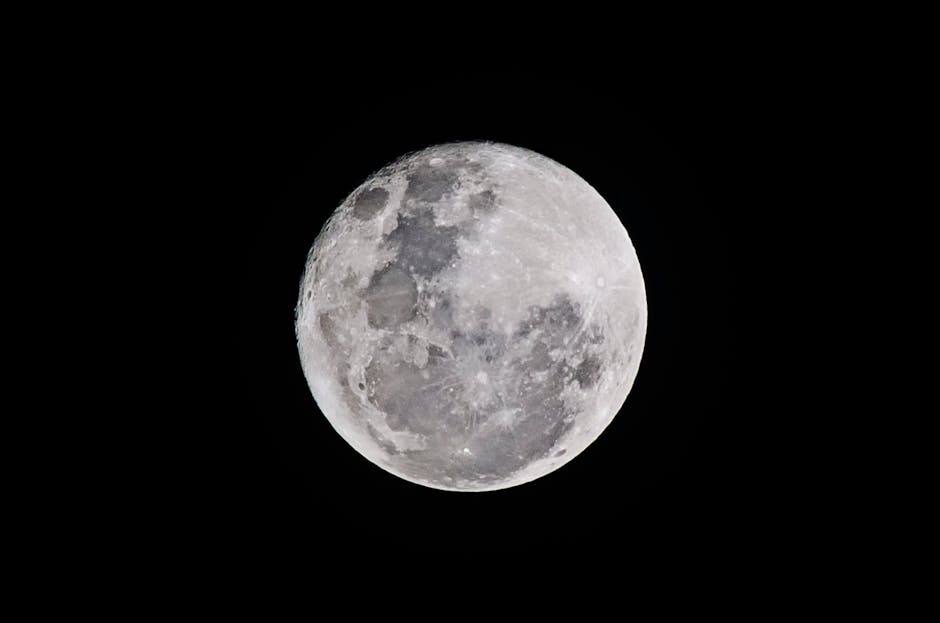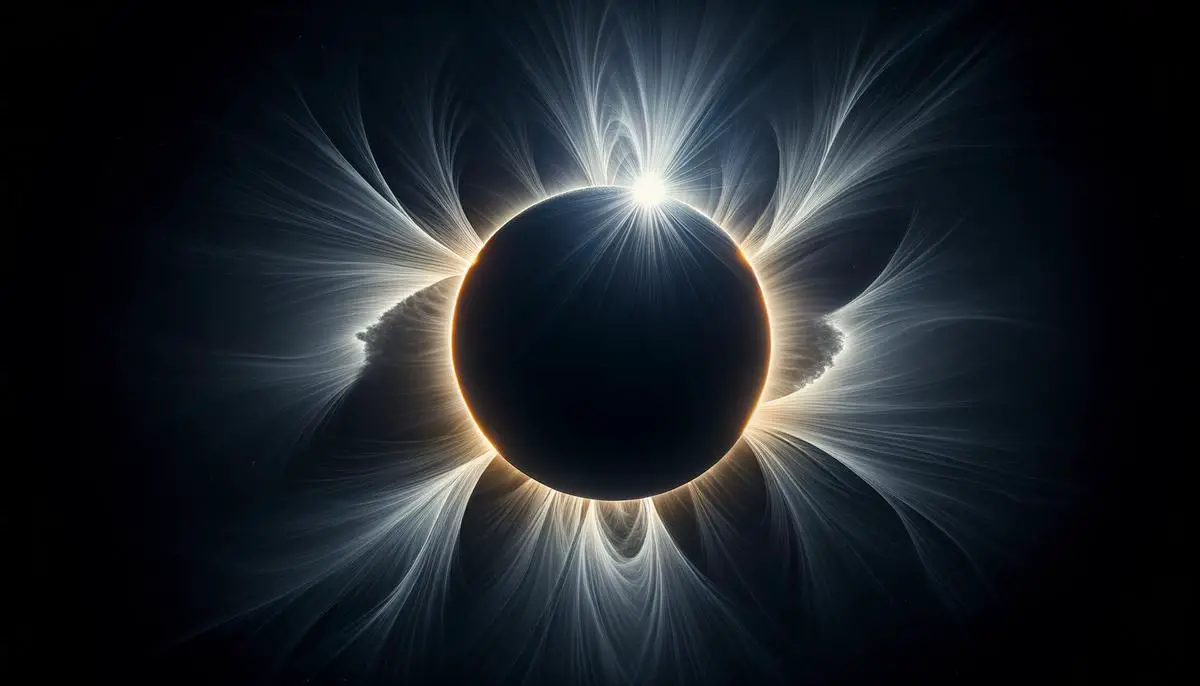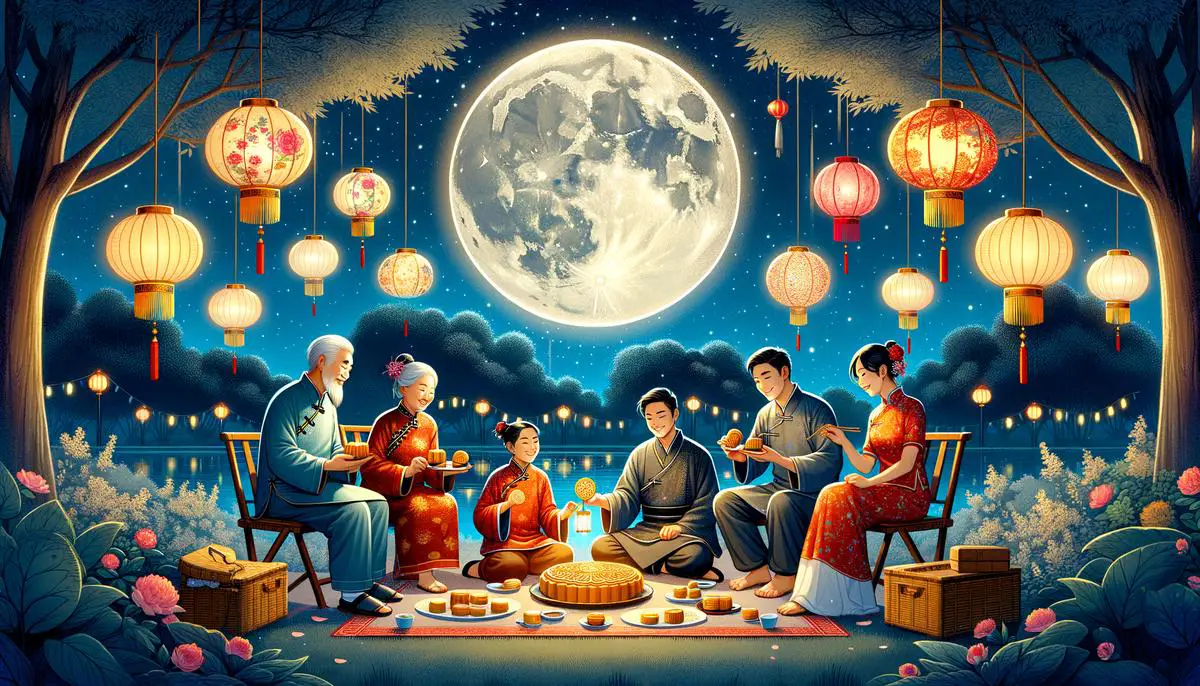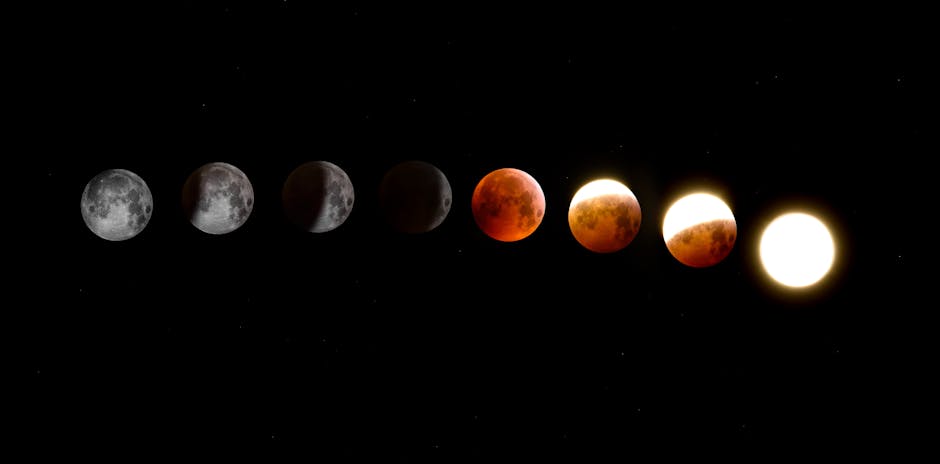The moon, a celestial body that has captivated humanity's imagination for millennia, serves as more than just a beacon in the night sky. Its phases, from the slender crescent to the full moon's radiant glow, weave through our lives with a rhythm that is both constant and comforting.
Lunar Cycle
The lunar cycle tracks the moon's transformation over roughly 29.5 days as it orbits Earth. This celestial dance involves the moon, Earth, and the sun, shifting the illuminated portion of the moon we on Earth can see. The cycle begins with the New Moon, where the moon sits between the Earth and the sun, rendering its Earth-facing side virtually invisible, plunged in shadow.
As days progress, the moon enters the Waxing Crescent phase. Here, a sliver of the moon begins to brighten as it slightly shifts its position, allowing sunlight to start spilling over onto its previously darkened side.
Next comes the First Quarter, marking a significant turn in the lunar cycle. At this point, half of the moon's Earth-facing side is now bathed in light, showcasing a perfect split between lunar day and night.
Moving from a half-lit sphere, the moon evolves into the Waxing Gibbous phase. During this time, more than half of the visible surface lights up as the moon pushes towards its full luminescence, revealing most of its face.
The Full Moon stage is reached when the moon's Earth-facing side is completely illuminated due to its position opposite the sun. It's when lunar explorers get a clear view of the entire surface from our vantage point on Earth.
As the moon continues orbiting, it enters the Waning Gibbous phase. This phase marks the beginning of the moon's nightly retreat into darkness, with slowly decreasing portions of illumination.
The Third Quarter mirrors the First Quarter but on the opposite side. Here again, we see half of the moon's surface lit, marking the transition towards increasingly slender crescents.
Finally, the moon arrives at the Waning Crescent. This dwindling phase signifies the moon's return to near invisibility, concluding its cyclical journey with only a tiny crescent of light visible before plunging back into the New Moon phase.
This ongoing cycle is a result of the intricate gravitational dance between Earth, its lunar companion, and the distant sun. The shadow play and shifting luminosity are all due to their relative positions, offering Earth-bound observers a reliable schedule of phases and a compelling display of natural rhythmic beauty.

Eclipses and Moon
Imagine our Earth, the Moon, and the Sun performing a cosmic ballet, where they occasionally fall into a perfect straight line. It's during these rare alignments that we experience the awe-inspiring phenomena known as eclipses. Let's explore how these eclipses happen, focusing on the pivotal roles played by lunar cycles and specific moon phases—solar eclipses during new moons and lunar eclipses during full moons.
A solar eclipse occurs when the Moon positions itself directly between Earth and the Sun. This can only happen during the New Moon phase when our lunar companion is all shadowy on the side facing us. The Moon, though far smaller than the Sun, perfectly covers it due to the cosmic coincidence of sizes and distances, casting a shadow on Earth. For observers in the right spot, this turns day momentarily into night.
If you've ever wondered about those rare "Black Moons," they tie into solar eclipses under the definition of the second New Moon in a single month. Although not directly impacting the predictability of an eclipse, they're part of the lunar cycle that influences our calendar system and can make certain months packed with lunar intrigue.
In contrast, a lunar eclipse occurs during a Full Moon phase. This event unfolds when Earth lines up perfectly between the Sun and the Moon, casting a shadow over the moon's surface. The moon, fully illuminated by the sun from our perspective, gradually dims and may take on a red tint as sunlight filters through Earth's atmosphere before reaching it. This phenomenon highlights how interconnected and precisely balanced our cosmos is.
Blue Moons, defined as the second Full Moon in a calendar month, add their own unique flair to the eclipse timeline. Though more of a calendrical quirk than an astronomical phenomenon, a Blue Moon doesn't directly cause or impact eclipses but serves as a reminder of the unusual rhythms of our universe. Witnessing any kind of eclipse around a Blue Moon period feels particularly special.
In summary, lunar cycles drive the occurrence of eclipses in serendipitous alignment, with New Moons setting the stage for solar eclipses, and Full Moons for lunar ones. By deciphering these cosmic clues—how the earth, moon, and sun interact in space—we unlock the marvels behind eclipses. The advent of Black and Blue Moons adds an extra layer of intrigue to our lunar encounters, making celestial events not just astronomical phenomena but staples of human curiosity. So, next time you witness an eclipse, remember the extraordinary cosmic dance that made it possible, bridging space and time in a moment of terrestrial wonder.

Cultural Significance
Throughout history, different cultures around the globe have assigned deep historical and cultural significance to the phases of the moon. These societies observed the lunar cycle closely, weaving its patterns into the fabric of their daily lives, including their agricultural practices, hunting expeditions, and ritualistic activities.
One of the most widely recognized uses of the moon's phases has been in agriculture. Ancient farmers depended on knowledge of the lunar cycle to plant and harvest crops effectively. Certain phases of the moon were believed to have a direct effect on plant growth and moisture content in the soil. The moon's gravitational pull, which affects ocean tides, was also thought to influence underground water tables, thereby impacting seed germination and growth. This lunar-based agricultural calendar is evident in many farming almanacs that are still referenced today.
Hunting was another activity intricately linked with the moon. Many indigenous cultures believed that animal behaviors changed according to the lunar cycle. The Full Moon phase, with its bright night skies, was an opportune time to hunt, as visibility was higher, and prey could be spotted more easily. Some hunting tribes named moons based on seasonal behaviors of animals and natural phenomena. For instance, the "Wolf Moon" in January derives its name from the idea that wolves howled more during this time due to scarcity of food.
Rituals and religious ceremonies often coincided with specific moon phases as well. The new moon and full moon phases were particularly special, considered windows of increased spiritual activity and significant times for reflection, celebration, or remembrance. Many ancient structures, such as the stone circles of Stonehenge, are thought to have been constructed with the lunar cycle in mind, aligned with key phases of the moon to mark important celestial events or seasonal transitions.
The naming of full moons throughout the year is a tradition that endures, richly embedded in the cultural tapestries of various societies. These names typically reflect seasonal changes and are closely tied to the natural environment, echoing the culture's connection and responsiveness to the world around them. For example, the "Harvest Moon" signals the time to collect crops, while the "Snow Moon" indicates the heavy snowfall periods.
Indigenous peoples across North America developed a system of moon names that tracked more than just seasons; they encompassed a blend of astrology and phenology to mark significant times for fishing, gathering, and preparing for the coming months. Similarly, in many Eastern cultures, full moons serve as markers for festivals and holidays, such as the Mid-Autumn Festival in China, where mooncakes are shared among family and friends under the bright full moon.
Understanding the cultural significance of moon phases offers a fascinating glimpse into how ancient civilizations sought to integrate celestial movements into their lives, influencing everything from agriculture and hunting to spirituality and social gatherings. This deep-rooted lunar connection underscores a universal human tendency to seek patterns in nature and attune life's rhythms to those of the cosmos. Reflecting on these practices today encourages us to consider our interconnections with both the natural world and our ancestors' wisdom, as we continue to gaze up at the same moon they once did, moved by its phases and the endless cycle of renewal it symbolizes.

In conclusion, the moon's phases play a pivotal role in our world. The lunar cycle is not just an astronomical occurrence; it is a thread woven into human history and culture. By understanding this celestial dance and its impact on agriculture, hunting, rituals, and even our calendars, we connect with generations past who also gazed upon these same lunar phases with wonder. It reminds us of our shared human experience under one unchanging moon.
- Rao N. Dynamics of the Earth-Moon System. Cambridge University Press; 2018.
- Kelley DH, Milone EF. Exploring Ancient Skies: A Survey of Ancient and Cultural Astronomy. 2nd ed. Springer; 2011.
- Aveni AF. Empires of Time: Calendars, Clocks and Cultures. University Press of Colorado; 2002.
![]()
